| Bandalised | ||||
|---|---|---|---|---|
 | ||||
| Studio album by | ||||
| Released | 1994 | |||
| Genre | Folk | |||
| Length | 54:34 | |||
| Label | Home Roots Music | |||
| Vin Garbutt chronology | ||||
| ||||
Bandalised is a 1994 folk music album by Vin Garbutt.
| Bandalised | ||||
|---|---|---|---|---|
 | ||||
| Studio album by | ||||
| Released | 1994 | |||
| Genre | Folk | |||
| Length | 54:34 | |||
| Label | Home Roots Music | |||
| Vin Garbutt chronology | ||||
| ||||
Bandalised is a 1994 folk music album by Vin Garbutt.
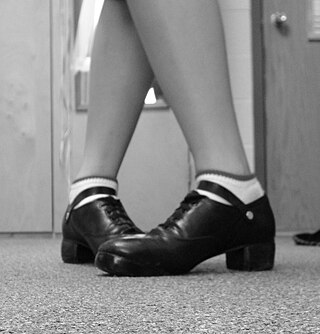
The reel is a folk dance type as well as the accompanying dance tune type. Of Scottish origin, reels are also an important part of the repertoire of the fiddle traditions of the British Isles and North America. In Scottish country dancing, the reel is one of the four traditional dances, the others being the jig, the strathspey and the waltz, and is also the name of a dance figure.

Irish dance refers to a group of traditional dance forms originating from Ireland, encompassing dancing both solo and in groups, and dancing for social, competitive, and performance purposes. Irish dance in its current form developed from various influences such as earlier native Irish dance, English country dancing and later possibly French quadrilles, as it became popular in Britain and Ireland during the 19th century. Dance was taught by "travelling dance masters" across Ireland in the 17th and 18th centuries, and separate dance forms developed according to regional practice and differing purposes. Irish dance became a significant part of Irish culture, particularly for Irish nationalist movements. From the early 20th century, a number of organisations promoted and codified the various forms of dance, creating competitive structures and standardised styles. Irish dancers who compete for competitive reasons dance in a dance style that is more modern than traditional Irish dance. It is mainly done solo, but there is some team dancing in groups of 2, 3, 4, 6, 8, 10, 16 and even numbers onwards.

The hornpipe is any of several dance forms played and danced in Britain and Ireland and elsewhere from the 16th century until the present day. The earliest references to hornpipes are from England with Hugh Aston's Hornepype of 1522 and others referring to Lancashire hornpipes in 1609 and 1613.

A Fife and drum corps is a musical ensemble consisting of fifes and drums. In the United States of America, fife and drum corps specializing in colonial period impressions using fifes, rope tension snare drums, and (sometimes) rope tension bass drums are known as Ancient Fife and Drum Corps. Many of these ensembles originated from a type of military field music.

The aboyne dress is the name given to the prescribed attire for female dancers in the Scottish national dances, such as the Flora MacDonald's fancy, the Scottish lilt, and others. Male dancers wear the kilt for these dances, the kilt being a male garment. There are two versions of the aboyne dress in use. Some consider the aboyne as quite suited to the graceful movements of the National dances.
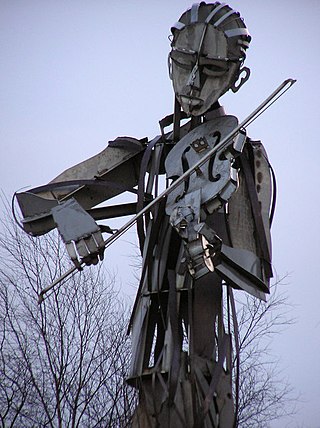
The Celtic fiddle is one of the most important instruments in the traditional repertoire of Celtic music. The fiddle itself is identical to the violin, however it is played differently in widely varying regional styles. In the era of sound recording some regional styles have been transmitted more widely while others have become more uncommon.
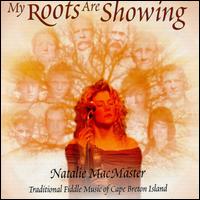
My Roots Are Showing is an album by Natalie MacMaster, released in 2000 on the Rounder Records label. The title is word play, as the phrase is most often regarded when discussing hair color.

Finnegan Wakes is a live album by The Dubliners. Recorded at the Gate Theatre on 26 and 27 April 1966 and produced by Nathan Joseph, this was The Dubliners' final recording for Transatlantic Records. But it was also their first to feature their first established line-up of Ronnie Drew, Barney McKenna, Luke Kelly, Ciarán Bourke and John Sheahan. The album featured "Nelson's Farewell", a satirical song about the bombing and destruction of Nelson's Pillar in O'Connell Street, Dublin on 8 March 1966.
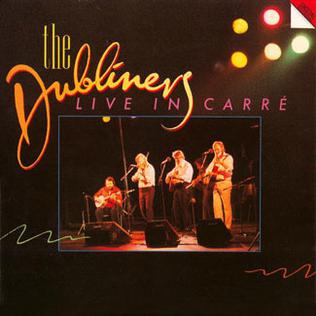
Live in Carré is a live album by The Dubliners. Recorded live in Amsterdam in October 1983, this album featured Luke Kelly's final recordings with The Dubliners.

The Dubliner's Dublin is the last of The Dubliners' albums to be released on vinyl, The Dubliner's Dublin coincided with Dublin City's millennium celebrations. The lineup was Ronnie Drew, Barney McKenna, John Sheahan, Seán Cannon and Eamonn Campbell and there were also a number of guest musicians. Campbell again took on the role of producer. A video containing some of the music from the album was also released, combining with a tour of Dublin narrated by Ronnie Drew.

30 Years A-Greying is a double album by The Dubliners, again produced by Eamonn Campbell. 30 Years A-Greying is similar to 25 Years Celebration in that it also features a number of special guests. The Pogues featured again, this time on a version of "Whiskey In The Jar". Other special guests are Billy Connolly, De Dannan, Rory Gallagher and the Hothouse Flowers.

Alive Alive-O is a double album by the Irish Folk Group The Dubliners which was recorded live throughout several Evenings in December 1996 in Germany at the end of their European tour. After the departure of Ronnie Drew, The Dubliners were joined by the famous Irish singer Paddy Reilly who lends his voice to several ballads on the album. John Sheahan's daughter Ceoladh guests with her father, duetting on fiddle with him on his composition, "Among Friends". The album is notable for some mixed German-English song introductions by Sean Cannon, causing widespread laughter among the audience.

Live from the Gaiety is a live album by The Dubliners. It was recorded during the Irish leg of their tour celebrating forty years on the road. The double album was recorded at the Gaiety Theatre in Dublin in June 2002. All surviving members took part. A companion double DVD of the concert in its entirety was also released.

Live At Vicar Street is a live album recorded by The Dubliners at a concert at Vicar Street in Dublin on Sunday, 23 July 2006 as part of their Irish tour. A DVD and double CD of the concert were released. Ceoladh Sheahan joined her father and the band on stage for a rendition of "The Marino Waltz". This was the first of the band's albums to feature Patsy Watchorn, who replaced Paddy Reilly after nine years with the group. They were introduced by Jim McCann.
Swan-Upmanship is an album by the Old Swan Band.
Will Atkinson was a noted traditional musician from northern Northumberland. He started off as a player of the English diatonic accordion, but was best known as a harmonica or moothie player. His playing was distinguished by a very clear sense of rhythm, with a definite lilt. He was a major figure in Northumbrian music. He was also the composer of several tunes that have entered the tradition and are played at gatherings and sessions.
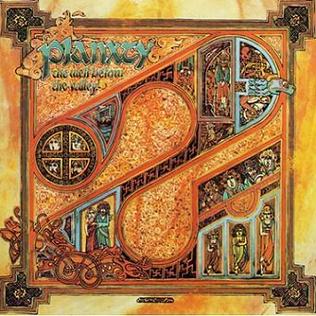
The Well Below the Valley is the second album by the Irish folk group Planxty. It was recorded at Escape Studios in Kent, England, from 18 June 1973 until the end of the month, and was released later that year. It takes its title from the sixth song on the album, "The Well Below the Valley".
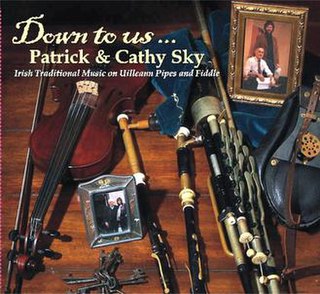
Down to Us is a 2009 album of traditional Irish music performed by Patrick Sky and Cathy Sky.
Finbarr Dwyer was a traditional Irish accordion player from the famed Dwyer musical family. He was born in Castletownbere, Co. Cork on 20 September 1946, began playing accordion at the age of three, and began composing at the age of nine. Both of his parents played accordion and his father also played fiddle. His brothers Richard and Michael likewise played accordion, while his brother John, born in 1933, played fiddle. In 1969 he won the All-England accordion title. He died on 8 February 2014, in Mallow, Co. Cork, Ireland.

50 Years is an album by The Dubliners released on 19 November 2012. The album charted at No. 10 in Ireland, and received gold certification in December 2012 from the IRMA. The album was highly rated in the US, UK and across Europe. The album features songs by all members of the band.